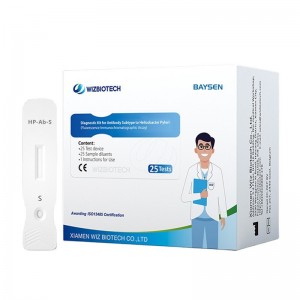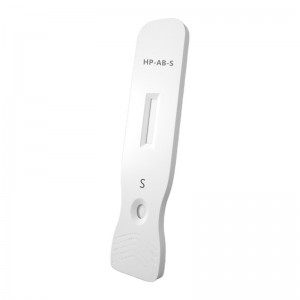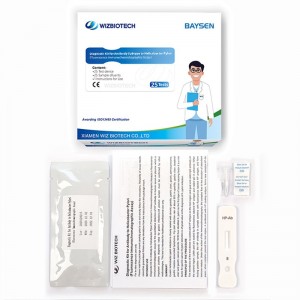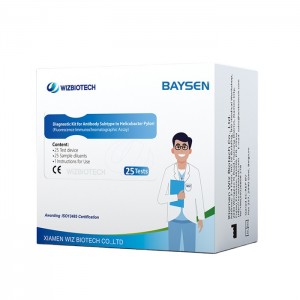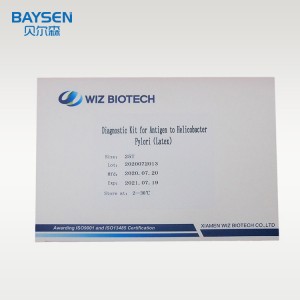Diagnostic Kit for Antibody Subtype to Helicobacter Pylori
Production information
| Model Number | HP-ab-s | Packing | 25 Tests/ kit, 30kits/CTN |
| Name | Antibody Subtype to Helicobacter Pylori | Instrument classification | Class I |
| Features | High sensitivity, Easy opeation | Certificate | CE/ ISO13485 |
| Accuracy | > 99% | Shelf life | Two Years |
| Methodology | Fluorescence Immunochromatographic Assay |
OEM/ODM service | Avaliable |
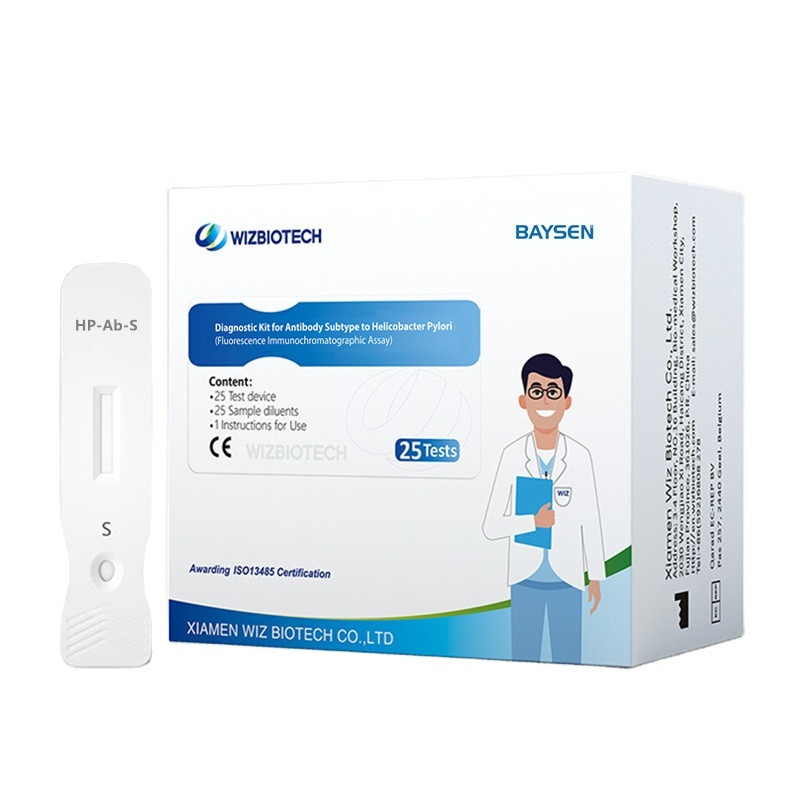
Summary
Helicobacter pylori are gram-negative bacteria, and the spiral bending shape gives it the name of helicobacterpylori. Helicobacter pylori live in different areas of stomach and duodenum, which will lead to mild chronic inflammation of gastric mucosa, gastric and duodenal ulcers, and gastric cancer. International Agency for Research on Cancer identified HP infection as Class I carcinogen in 1994, and cancerogenic HP mainly contains two cytotoxins: one is cytotoxin-associated CagA protein, the other is vacuolating cytotoxin (VacA). HP can be divided into two types based on expression of CagA and VacA: type I is toxigenic strain (with expression of both CagA and VacA or any one of them), which’s highly pathogenic and easy to cause gastric diseases; type II is atoxigenic HP (without expression of both CagA and VacA), which’s less toxic and normally doesn’t have clinical symptom upon infection.
Feature:
• High sensitive
• result reading in 15 minutes
• Easy operation
• Factory direct price
• need machine for result reading
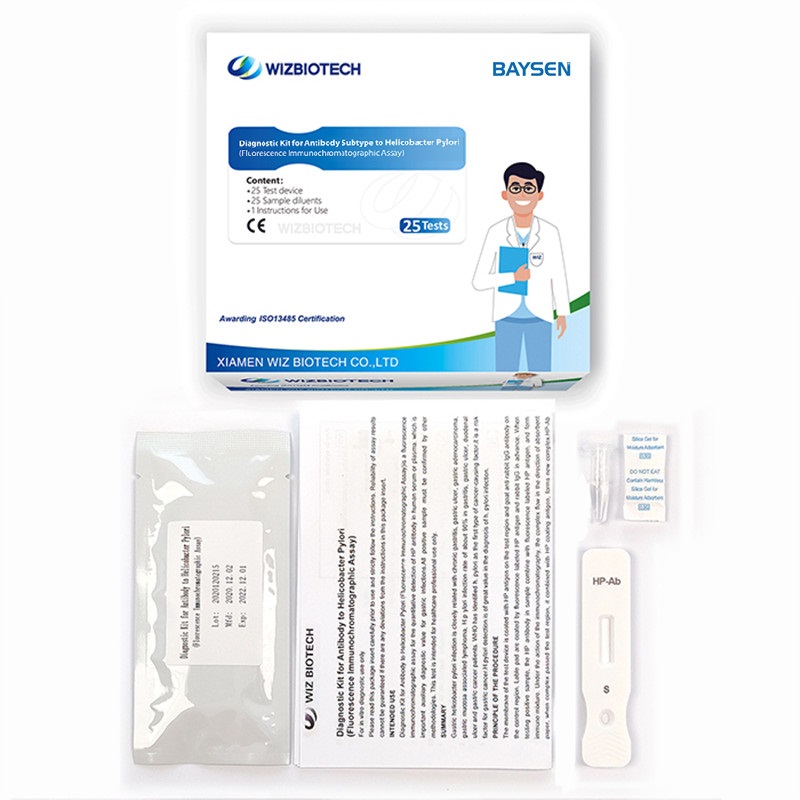
Intend Use
This kit is applicable to in vitro qualitative detection of Urease antibody, CagA antibody and VacA antibody to helicobacter pylori in human whole blood, serum or plasma sample, and it’s suitable for auxiliary diagnosis of HP infection as well as identification of type of helicobacter pylori patient infected with. This kit only provides test results of Urease antibody, CagA antibody and VacA antibody to helicobacter pylori, and results obtained shall be used in combination with other clinical information for analysis. It must only be used by healthcare professionals.
Test procedure
| 1 | I-1: Use of portable immune analyzer |
| 2 | Open the aluminum foil bag package of reagent and take out the test device. |
| 3 | Horizontally insert the test device into the slot of immune analyzer. |
| 4 | On home page of operation interface of immune analyzer, click “Standard” to enter test interface. |
| 5 | Click “QC Scan” to scan the QR code on inner side of the kit; input kit related parameters into instrument andselect sample type.Note: Each batch number of the kit shall be scanned for one time. If the batch number has been scanned, then skip this step. |
| 6 | Check the consistency of “Product Name”, “Batch Number” etc. on test interface with information on the kit label. |
| 7 | Start to add sample in case of consistent information:Step 1: slowly pipette 80μL serum/plasma/whole blood sample at once, and pay attention not to pipette bubbles; Step 2: pipette sample to sample diluent, and thoroughly mix sample with sample diluent; Step 3: pipette 80µL thoroughly mixed solution into well of test device, and pay attention no to pipette bubbles during sampling |
| 8 | After complete sample addition, click “Timing” and remaining test time will be automatically displayed on theinterface. |
| 9 | Immune analyzer will automatically complete test and analysis when test time is reached. |
| 10 | After test by immune analyzer is completed, test result will be displayed on test interface or can be viewed through“History” on home page of operation interface. |
Exhibition










